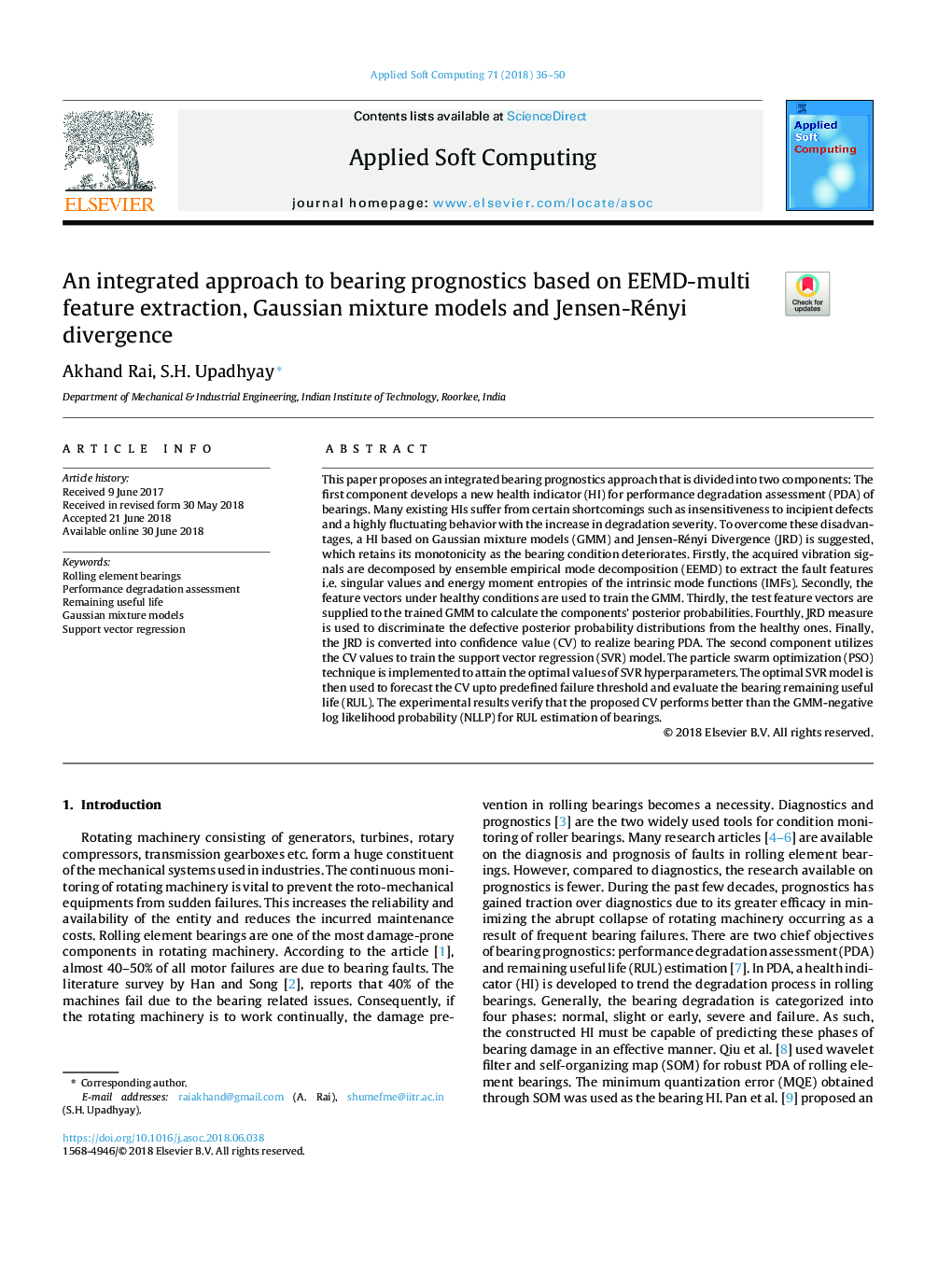| Article ID | Journal | Published Year | Pages | File Type |
|---|---|---|---|---|
| 6903238 | Applied Soft Computing | 2018 | 15 Pages |
Abstract
This paper proposes an integrated bearing prognostics approach that is divided into two components: The first component develops a new health indicator (HI) for performance degradation assessment (PDA) of bearings. Many existing HIs suffer from certain shortcomings such as insensitiveness to incipient defects and a highly fluctuating behavior with the increase in degradation severity. To overcome these disadvantages, a HI based on Gaussian mixture models (GMM) and Jensen-Rényi Divergence (JRD) is suggested, which retains its monotonicity as the bearing condition deteriorates. Firstly, the acquired vibration signals are decomposed by ensemble empirical mode decomposition (EEMD) to extract the fault features i.e. singular values and energy moment entropies of the intrinsic mode functions (IMFs). Secondly, the feature vectors under healthy conditions are used to train the GMM. Thirdly, the test feature vectors are supplied to the trained GMM to calculate the components' posterior probabilities. Fourthly, JRD measure is used to discriminate the defective posterior probability distributions from the healthy ones. Finally, the JRD is converted into confidence value (CV) to realize bearing PDA. The second component utilizes the CV values to train the support vector regression (SVR) model. The particle swarm optimization (PSO) technique is implemented to attain the optimal values of SVR hyperparameters. The optimal SVR model is then used to forecast the CV upto predefined failure threshold and evaluate the bearing remaining useful life (RUL). The experimental results verify that the proposed CV performs better than the GMM-negative log likelihood probability (NLLP) for RUL estimation of bearings.
Keywords
Related Topics
Physical Sciences and Engineering
Computer Science
Computer Science Applications
Authors
Akhand Rai, S.H. Upadhyay,
